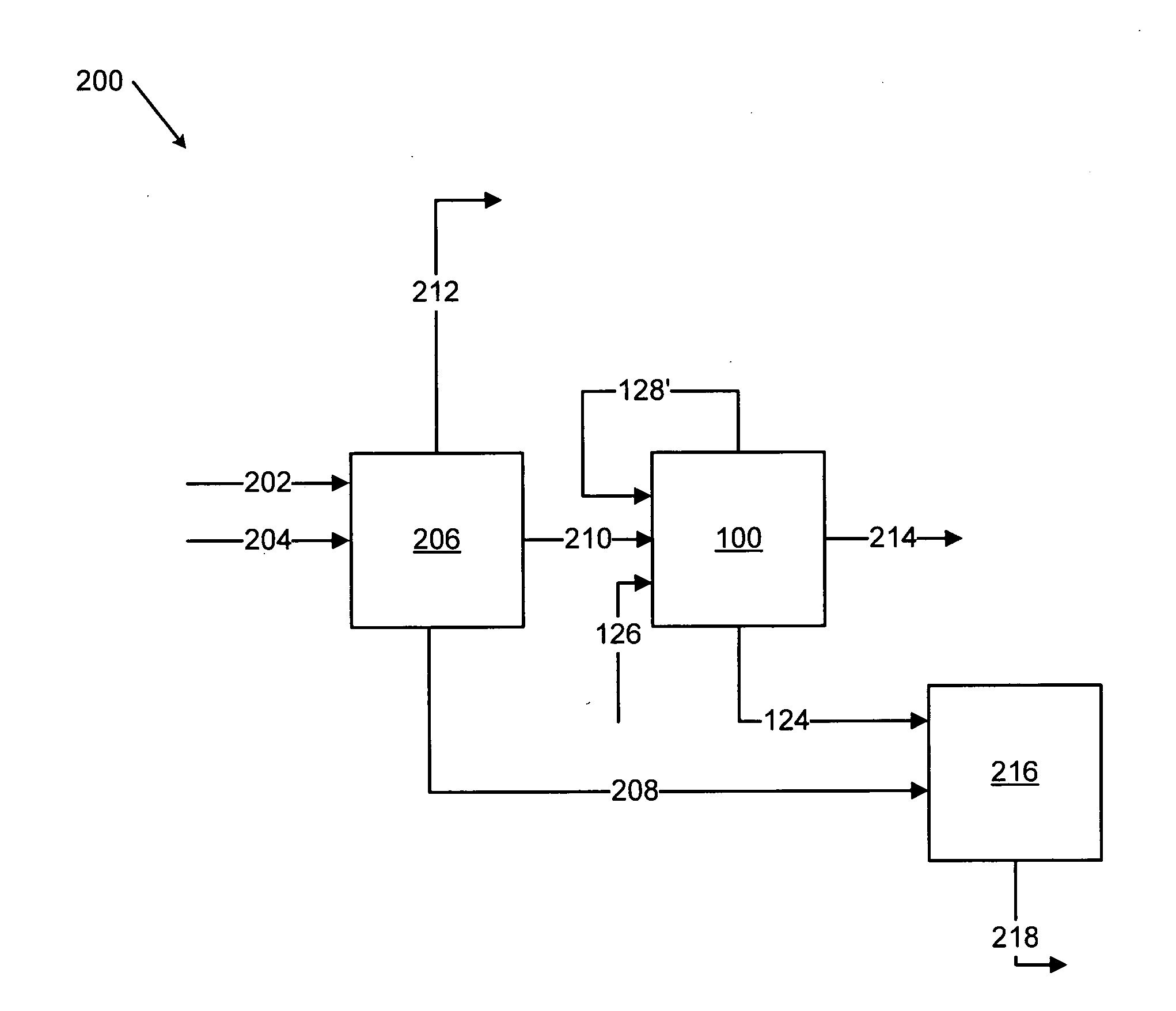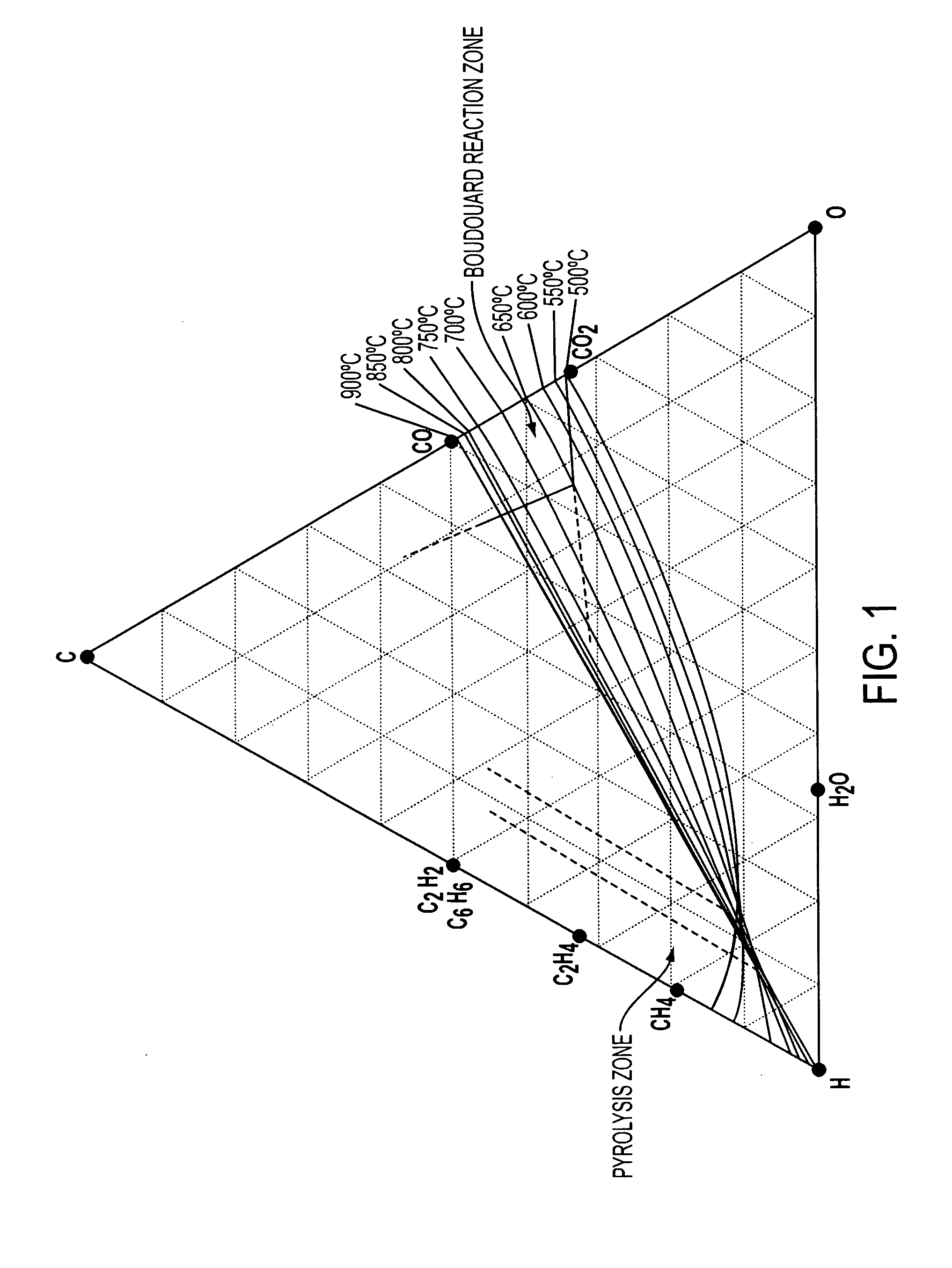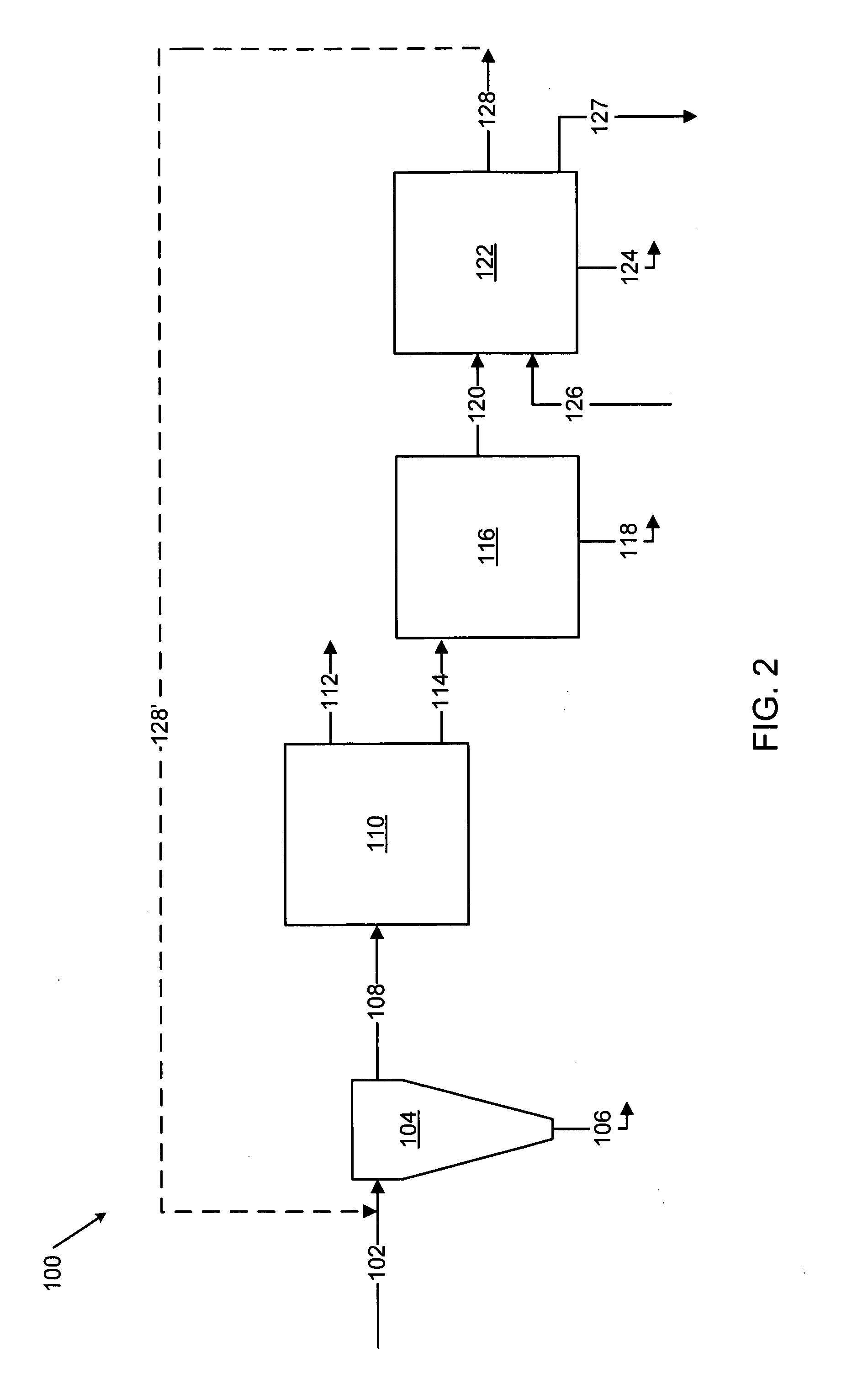Methods for treating an offgas containing carbon oxides
a technology of carbon dioxide and offgas, which is applied in the direction of catalyst activation/preparation, metal processing, metal/metal-oxide/metal-hydroxide catalyst, etc., can solve the problems of significant cost, use of cnts, and cost of manufacture, and capture and sequestration of carbon dioxid
- Summary
- Abstract
- Description
- Claims
- Application Information
AI Technical Summary
Benefits of technology
Problems solved by technology
Method used
Image
Examples
example 1
[0098]Twelve steel coupons were placed in a quartz tube as described above. A reaction gas containing about 25% H2, 25% CO, 25% CO2, and 25% CH4 was introduced into the quartz tube at about 4.0 MPa. The gases flowed over the coupons for about 4 hours at 2000 sccm (standard cubic centimeters per minute). Solid carbon formed on eight of the twelve coupons at temperatures between about 650° C. and about 870° C., as shown in Table 1 below. After the test, solid carbon was physically removed from some of the coupons and tested for BET specific surface area, as shown in Table 1. About 41.2 grams of water was collected from the gases during the test.
TABLE 1Solid Carbon Formation from 25% H2, 25% CO, 25% CO2, and 25% CH4Sample #123456Distance from inlet (cm)132230.740.448.859.2Temperature (° C.)358.4563.3649.4701.5721.4749.9H2 composition (%)23.722.621.9CH4 composition (%)24.924.424.1CO2 composition (%)23.021.420.5CO composition (%)26.127.227.9H2O composition (%)2.394.465.67Deposition rate ...
example 2
[0099]Twelve steel coupons were placed in a quartz tube as described above. A reaction gas containing about 50% CO and 50% CO2 was introduced into the quartz tube at about 4.0 MPa. The gases flowed over the coupons for about three hours at 2000 sccm. Solid carbon formed on ten of the twelve coupons at temperatures between about 590° C. and about 900° C., as shown in Table 2 below. After the test, solid carbon was physically removed from some of the coupons and tested for BET specific surface area, as shown in Table 2. No water was collected from the gases during the test.
TABLE 2Solid Carbon Formation from 50% CO and 50% CO2Sample #123456Distance from inlet (cm)142331.540.951.059.4Temperature (° C.)413.9589.1631.2666.7701.1738.2H2 composition (%)0.390.390.400.400.40CO2 composition (%)49.749.749.649.649.5CO composition (%)49.949.950.050.050.1Deposition rate (g / cm2 / hr)0.0000.0110.0110.0070.0140.009Surface Area (m2 / g)43.978.527.4Sample #789101112Distance from inlet (cm)68.377.286.194.21...
example 3
[0100]Twelve steel coupons were placed in a quartz tube as described above. A reaction gas containing about 90% CO and 10% CO2 was introduced into the quartz tube at about 4.0 MPa. The gases flowed over the coupons for about two hours at 2000 sccm. Solid carbon formed on ten of the twelve coupons at temperatures between about 590° C. and about 900° C., as shown in Table 3 below. After the test, solid carbon was physically removed from some of the coupons and tested for BET specific surface area, as shown in Table 3. No water was collected from the gases during the test.
TABLE 3Solid Carbon Formation from 90% CO and 10% CO2Sample #123456Distance from inlet (cm)142331.540.452.358.2Temperature (° C.)423.6588.5632.6663.1703.2729.4H2 composition (%)0.540.570.600.62CO2 composition (%)11.612.313.413.9CO composition (%)87.987.186.085.5Deposition rate (g / cm2 / hr)0.0000.0010.0830.1180.0640.066Surface Area (m2 / g)68.261.758.753.2Sample #789101112Distance from inlet (cm)68.878.588.492.5103113Tempe...
PUM
| Property | Measurement | Unit |
|---|---|---|
| temperature | aaaaa | aaaaa |
| dew point | aaaaa | aaaaa |
| temperatures | aaaaa | aaaaa |
Abstract
Description
Claims
Application Information
 Login to View More
Login to View More - R&D
- Intellectual Property
- Life Sciences
- Materials
- Tech Scout
- Unparalleled Data Quality
- Higher Quality Content
- 60% Fewer Hallucinations
Browse by: Latest US Patents, China's latest patents, Technical Efficacy Thesaurus, Application Domain, Technology Topic, Popular Technical Reports.
© 2025 PatSnap. All rights reserved.Legal|Privacy policy|Modern Slavery Act Transparency Statement|Sitemap|About US| Contact US: help@patsnap.com



